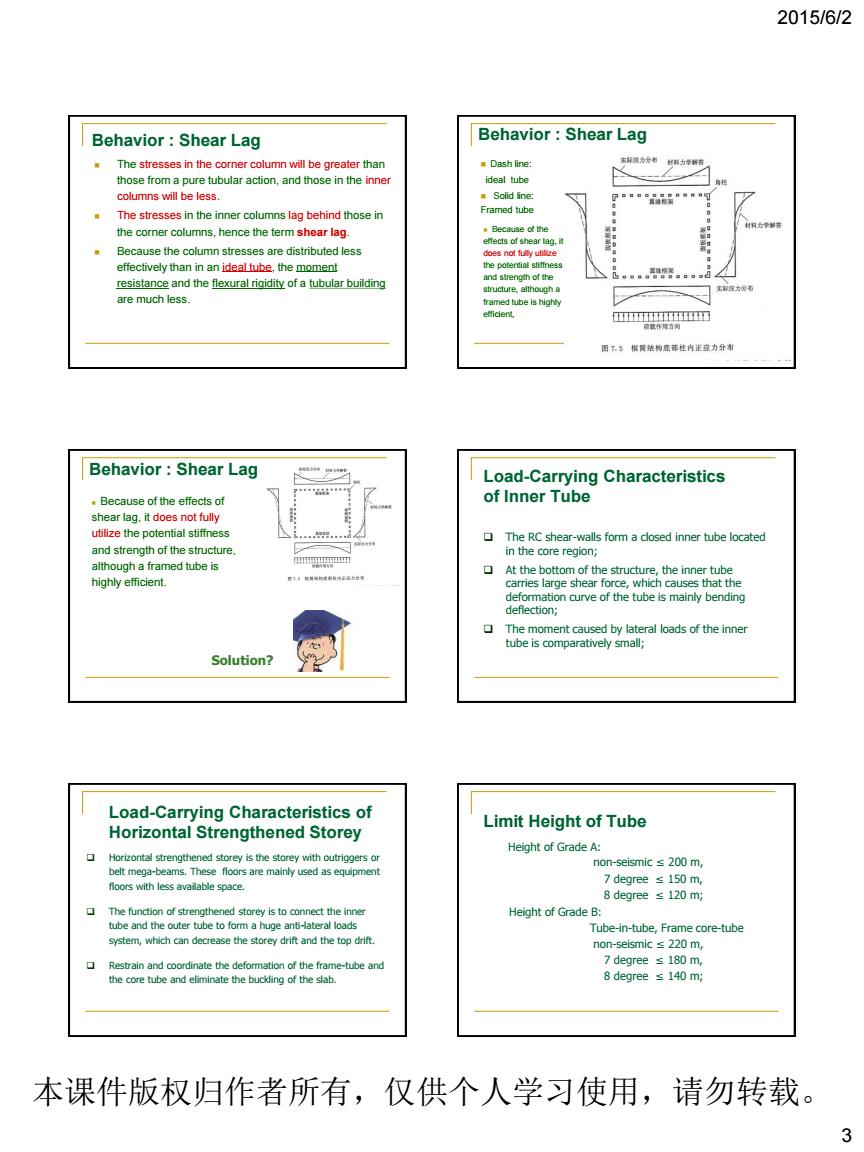正在加载图片...

2015/6/2 Behavior:Shear Lag Behavior:Shear Lag columns will be less. The stresses in the inner columnslag behind those in he omer hence eteshg Behavior:Shear Lag Load-Carry Because of the effects o and strength of thestructure nurve of the tube is mainly bending 0 Solution? Load-Carrying Characteristics of Limit Height of Tube Horizontal Strengthened Storey Height of Grade A: non-seismic200 m Height of Grade B system,which can decrease the storey drift and the top drift nete 本课件版权归作者所有,仅供个人学习使用,请勿转载。 3 2015/6/2 3 The stresses in the corner column will be greater than those from a pure tubular action, and those in the inner columns will be less. The stresses in the inner columns lag behind those in the corner columns, hence the term shear lag. Because the column stresses are distributed less effectively than in an ideal tube, the moment resistance and the flexural rigidity of a tubular building are much less. Behavior : Shear Lag Dash line: ideal tube Solid line: Framed tube Behavior : Shear Lag Because of the effects of shear lag, it does not fully utilize the potential stiffness and strength of the structure, although a framed tube is highly efficient, Behavior : Shear Lag Because of the effects of shear lag, it does not fully utilize the potential stiffness and strength of the structure, although a framed tube is highly efficient. Solution? Load-Carrying Characteristics of Inner Tube The RC shear-walls form a closed inner tube located in the core region; At the bottom of the structure, the inner tube carries large shear force, which causes that the deformation curve of the tube is mainly bending deflection; The moment caused by lateral loads of the inner tube is comparatively small; Load-Carrying Characteristics of Horizontal Strengthened Storey Horizontal strengthened storey is the storey with outriggers or belt mega-beams. These floors are mainly used as equipment floors with less available space. The function of strengthened storey is to connect the inner tube and the outer tube to form a huge anti-lateral loads system, which can decrease the storey drift and the top drift. Restrain and coordinate the deformation of the frame-tube and the core tube and eliminate the buckling of the slab. Limit Height of Tube Height of Grade A: non-seismic 200 m, 7 degree 150 m, 8 degree 120 m; Height of Grade B: Tube-in-tube, Frame core-tube non-seismic 220 m, 7 degree 180 m, 8 degree 140 m; 本课件版权归作者所有,仅供个人学习使用,请勿转载